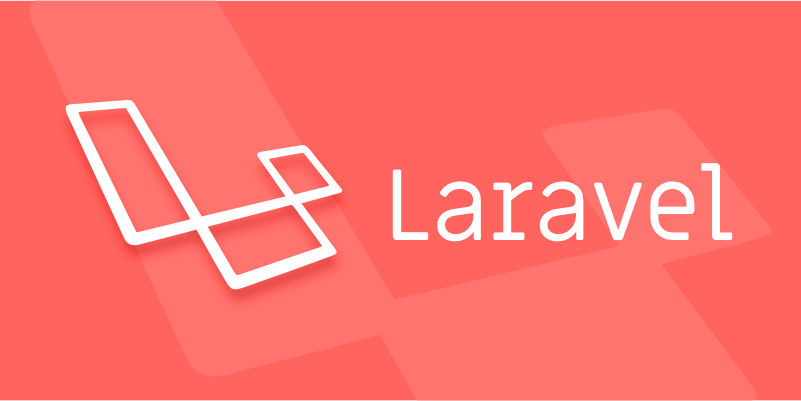Laravel's HTTP client is easy to use, especially since Laravel 7 built-in Guzzle-based encapsulation. 1. To initiate a GET request, you can use the Http::get() method, such as $response = Http::get('https://api.example.com/data'); 2. To obtain JSON data, you can use $data = $response->json() to determine success using successful() or ok(); 3. To interrupt the program when failing, you can add throw(); 4. To use withHeaders() to request with headers, such as setting User-Agent and Accept; 5. To pass the GET query parameters directly into the array as the second parameter; 6. To use the post() method for POST request and pass the data array; 7. To control timeout, use timeout() to specify the number of seconds; 8. To use pool() for concurrent requests Improve efficiency.

Laravel's HTTP client is actually quite convenient to use, especially since Laravel 7 has built-in Guzzle-based encapsulation, which saves the hassle of manually configuring and introducing third-party libraries. Using it to send external requests is not only concise, but also very intuitive.

How to initiate a basic GET request
In Laravel, using Http::get() is the most common way. For example, if you want to call an API to get data:
use Illuminate\Support\Facades\Http; $response = Http::get('https://api.example.com/data');
The result returned is a response object, you can get JSON data through json() method:

$data = $response->json();
If you just need to determine whether it is successful, you can use successful() or ok() :
if ($response->successful()) {
// Process data} It should be noted that by default Laravel does not throw exceptions. If you want to interrupt the program when it fails, you can add throw() :

$response = Http::get('https://api.example.com/data')->throw();
How to send requests with parameters and headers
Many times you need to pass parameters or set request headers. At this time, you can use methods such as withHeaders() and withOptions() .
For example, bring custom User-Agent and Accept:
$response = Http::withHeaders([
'User-Agent' => 'MyApp/1.0',
'Accept' => 'application/json'
])->get('https://api.example.com/data');It is also very simple to request the transmission of query parameters by GET. You can directly pass the parameters as the second parameter:
$response = Http::get('https://api.example.com/search', [
'query' => 'laravel',
'page' => 2
]); The POST request is replaced by post() method and passes the data:
$response = Http::post('https://api.example.com/submit', [
'name' => 'John',
'email' => 'john@example.com'
]);How to handle timeouts, retry and errors
By default, Laravel's HTTP client does not set a timeout, which may be less secure in production environments. It is recommended to add timeout() to control the maximum waiting time (unit is seconds):
$response = Http::timeout(5)->get('https://api.example.com/data');
If you want to automatically retry several times in the event of a network problem, you can combine PHP loops or use a package like retry() , but Laravel natively does not support automatic retry.
In addition, sometimes you may need to access the original Guzzle client to do some advanced operations, you can implement concurrent requests through HttpClient::pool() , or use Http::fake() to simulate responses in tests.
A few easy to ignore but practical tips
Logging : During the debugging stage, request information can be recorded, such as URL, response status code, etc.
Environment distinction : Configure different API addresses in
.envfiles to avoid hard coding.Connection pool optimization performance : If you want to send multiple requests at the same time, using
pool()can improve efficiency:$responses = Http::pool(fn ($pool) => [ $pool->get('https://api.example.com/endpoint1'), $pool->get('https://api.example.com/endpoint2'), ]);Basically that's it. Laravel's HTTP Client is not complicated to use, but some details such as the order of headers and exception handling methods should be paid more attention to.
The above is the detailed content of Using the Laravel HTTP Client.. For more information, please follow other related articles on the PHP Chinese website!

Hot AI Tools

Undress AI Tool
Undress images for free

Undresser.AI Undress
AI-powered app for creating realistic nude photos

AI Clothes Remover
Online AI tool for removing clothes from photos.

Clothoff.io
AI clothes remover

Video Face Swap
Swap faces in any video effortlessly with our completely free AI face swap tool!

Hot Article

Hot Tools

Notepad++7.3.1
Easy-to-use and free code editor

SublimeText3 Chinese version
Chinese version, very easy to use

Zend Studio 13.0.1
Powerful PHP integrated development environment

Dreamweaver CS6
Visual web development tools

SublimeText3 Mac version
God-level code editing software (SublimeText3)
 VSCode settings.json location
Aug 01, 2025 am 06:12 AM
VSCode settings.json location
Aug 01, 2025 am 06:12 AM
The settings.json file is located in the user-level or workspace-level path and is used to customize VSCode settings. 1. User-level path: Windows is C:\Users\\AppData\Roaming\Code\User\settings.json, macOS is /Users//Library/ApplicationSupport/Code/User/settings.json, Linux is /home//.config/Code/User/settings.json; 2. Workspace-level path: .vscode/settings in the project root directory
 How to handle transactions in Java with JDBC?
Aug 02, 2025 pm 12:29 PM
How to handle transactions in Java with JDBC?
Aug 02, 2025 pm 12:29 PM
To correctly handle JDBC transactions, you must first turn off the automatic commit mode, then perform multiple operations, and finally commit or rollback according to the results; 1. Call conn.setAutoCommit(false) to start the transaction; 2. Execute multiple SQL operations, such as INSERT and UPDATE; 3. Call conn.commit() if all operations are successful, and call conn.rollback() if an exception occurs to ensure data consistency; at the same time, try-with-resources should be used to manage resources, properly handle exceptions and close connections to avoid connection leakage; in addition, it is recommended to use connection pools and set save points to achieve partial rollback, and keep transactions as short as possible to improve performance.
 Mastering Dependency Injection in Java with Spring and Guice
Aug 01, 2025 am 05:53 AM
Mastering Dependency Injection in Java with Spring and Guice
Aug 01, 2025 am 05:53 AM
DependencyInjection(DI)isadesignpatternwhereobjectsreceivedependenciesexternally,promotingloosecouplingandeasiertestingthroughconstructor,setter,orfieldinjection.2.SpringFrameworkusesannotationslike@Component,@Service,and@AutowiredwithJava-basedconfi
 python itertools combinations example
Jul 31, 2025 am 09:53 AM
python itertools combinations example
Jul 31, 2025 am 09:53 AM
itertools.combinations is used to generate all non-repetitive combinations (order irrelevant) that selects a specified number of elements from the iterable object. Its usage includes: 1. Select 2 element combinations from the list, such as ('A','B'), ('A','C'), etc., to avoid repeated order; 2. Take 3 character combinations of strings, such as "abc" and "abd", which are suitable for subsequence generation; 3. Find the combinations where the sum of two numbers is equal to the target value, such as 1 5=6, simplify the double loop logic; the difference between combinations and arrangement lies in whether the order is important, combinations regard AB and BA as the same, while permutations are regarded as different;
 Python for Data Engineering ETL
Aug 02, 2025 am 08:48 AM
Python for Data Engineering ETL
Aug 02, 2025 am 08:48 AM
Python is an efficient tool to implement ETL processes. 1. Data extraction: Data can be extracted from databases, APIs, files and other sources through pandas, sqlalchemy, requests and other libraries; 2. Data conversion: Use pandas for cleaning, type conversion, association, aggregation and other operations to ensure data quality and optimize performance; 3. Data loading: Use pandas' to_sql method or cloud platform SDK to write data to the target system, pay attention to writing methods and batch processing; 4. Tool recommendations: Airflow, Dagster, Prefect are used for process scheduling and management, combining log alarms and virtual environments to improve stability and maintainability.
 python pytest fixture example
Jul 31, 2025 am 09:35 AM
python pytest fixture example
Jul 31, 2025 am 09:35 AM
fixture is a function used to provide preset environment or data for tests. 1. Use the @pytest.fixture decorator to define fixture; 2. Inject fixture in parameter form in the test function; 3. Execute setup before yield, and then teardown; 4. Control scope through scope parameters, such as function, module, etc.; 5. Place the shared fixture in conftest.py to achieve cross-file sharing, thereby improving the maintainability and reusability of tests.
 Understanding the Java Virtual Machine (JVM) Internals
Aug 01, 2025 am 06:31 AM
Understanding the Java Virtual Machine (JVM) Internals
Aug 01, 2025 am 06:31 AM
TheJVMenablesJava’s"writeonce,runanywhere"capabilitybyexecutingbytecodethroughfourmaincomponents:1.TheClassLoaderSubsystemloads,links,andinitializes.classfilesusingbootstrap,extension,andapplicationclassloaders,ensuringsecureandlazyclassloa
 How to work with Calendar in Java?
Aug 02, 2025 am 02:38 AM
How to work with Calendar in Java?
Aug 02, 2025 am 02:38 AM
Use classes in the java.time package to replace the old Date and Calendar classes; 2. Get the current date and time through LocalDate, LocalDateTime and LocalTime; 3. Create a specific date and time using the of() method; 4. Use the plus/minus method to immutably increase and decrease the time; 5. Use ZonedDateTime and ZoneId to process the time zone; 6. Format and parse date strings through DateTimeFormatter; 7. Use Instant to be compatible with the old date types when necessary; date processing in modern Java should give priority to using java.timeAPI, which provides clear, immutable and linear






